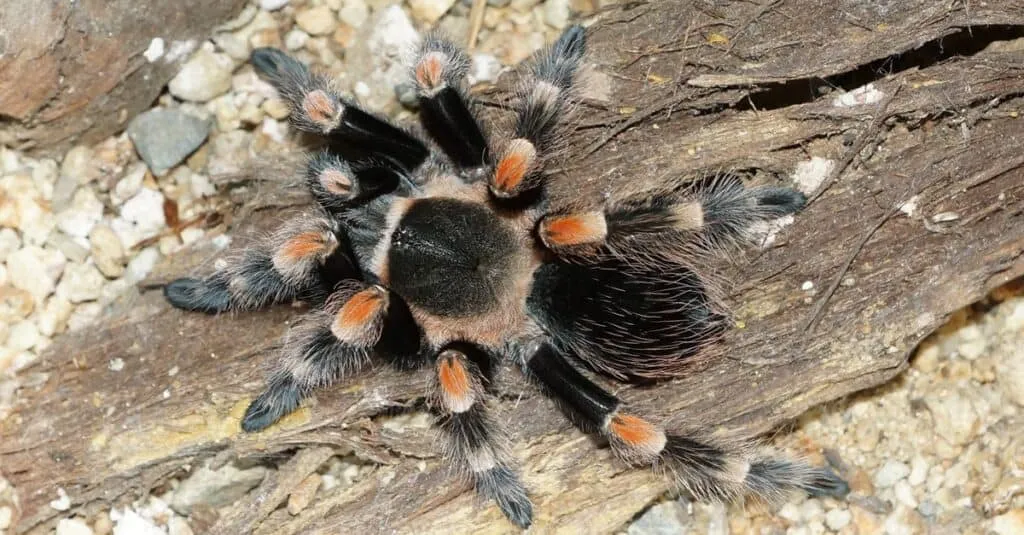What is Shedding for Red Knee Tarantulas
Shedding, also known as molting, is a fundamental process for Red Knee Tarantulas, and all other arthropods. This essential biological function enables these fascinating creatures to grow and thrive. It involves the periodic shedding of their exoskeleton, a rigid outer covering that provides protection and support. As the tarantula grows, its exoskeleton becomes too tight. Shedding allows the tarantula to replace its old, restrictive shell with a new, larger one, thus facilitating growth and development. Understanding the shedding process is crucial for any Red Knee Tarantula owner, as it impacts their pet’s health, well-being, and care requirements. This guide will delve into the various facets of shedding, offering insights into what to expect and how to provide the best possible care during this delicate period.
The Molting Process
The molting process is a complex and fascinating phenomenon. It starts with the formation of a new exoskeleton beneath the old one. This new exoskeleton is initially soft and pliable. As the process begins, the tarantula will stop eating and may become less active. It then begins to separate its old exoskeleton from the new one. This separation is aided by a molting fluid that helps to detach the old shell. The tarantula then works its way out of the old exoskeleton, a process that can take several hours or even days. The tarantula will often flip onto its back during this process, which is a natural part of molting. Once the tarantula has successfully shed its old exoskeleton, it will be left with a soft and vulnerable new one. This new exoskeleton will harden over the next few days, and the tarantula will gradually regain its normal activity levels.
Preparing for the Shed
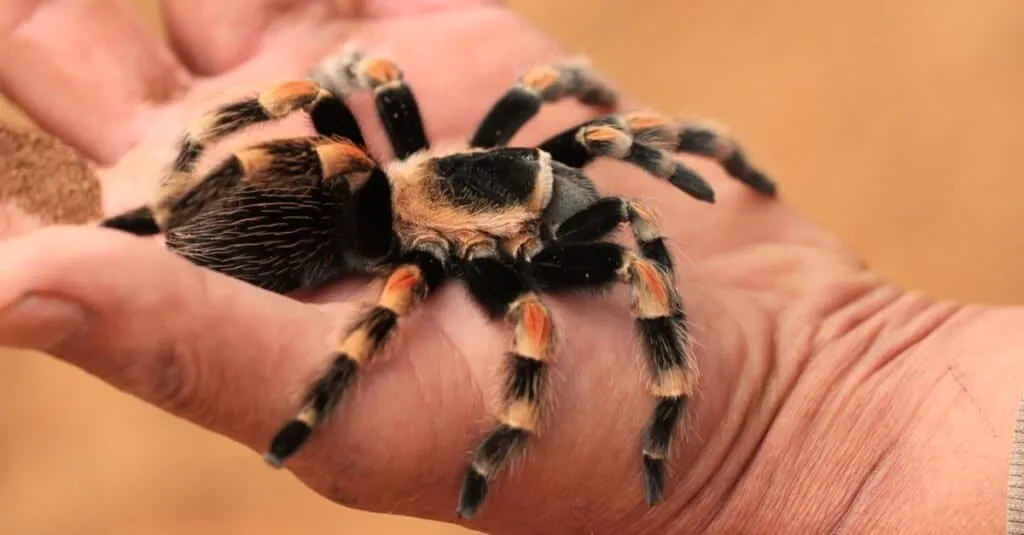
Before a Red Knee Tarantula sheds, it goes through a period of preparation. This can be observed through changes in its behavior and appearance. One of the most noticeable signs is a decrease in appetite. The tarantula may refuse food altogether or eat very little. It may also become less active, spending more time hiding in its burrow or a secluded area of its enclosure. The tarantula’s abdomen may appear darker and more swollen, as the new exoskeleton is forming underneath. Another sign is the tarantula’s attempt to create a secure molting environment, which often includes sealing off its burrow or webbing a thick layer of silk. These preparations are crucial for a successful molt, as they provide the tarantula with the necessary protection and stability during the process. Maintaining proper humidity and temperature levels is also essential during this time.
Signs Your Tarantula is Shedding
Identifying the signs of an impending shed is vital for Red Knee Tarantula owners. Several indicators signal that your tarantula is preparing to molt. The tarantula will typically stop eating, sometimes for weeks or even months before the actual shedding. Another sign is a change in the appearance of the abdomen. The abdomen may look darker or more bloated, suggesting that the new exoskeleton is developing underneath. The tarantula may also become more lethargic and spend more time hiding or in its burrow. You might also notice that the tarantula has started to build a thick layer of webbing, often sealing itself off in a secluded part of its enclosure. Keep a close eye on your tarantula, and be patient. These signs will help you to anticipate the shedding process.
The Actual Shedding Process
The shedding process itself is a remarkable sight to behold. The tarantula typically lies on its back, although sometimes it might molt in other positions. The old exoskeleton will begin to split open, usually along the carapace or the abdomen. Slowly, the tarantula will start to wriggle out of its old shell. This can be a strenuous process, and it may take several hours or even a full day. The tarantula will use its legs and pedipalps to free itself from the old exoskeleton. Once the tarantula has fully emerged, it will appear pale and soft, as the new exoskeleton is initially very vulnerable. Avoid disturbing the tarantula during this crucial period and maintain the correct environmental conditions to help it recover smoothly. The old exoskeleton will retain the shape of the tarantula, providing a unique record of its growth.
Important Factors During Shedding
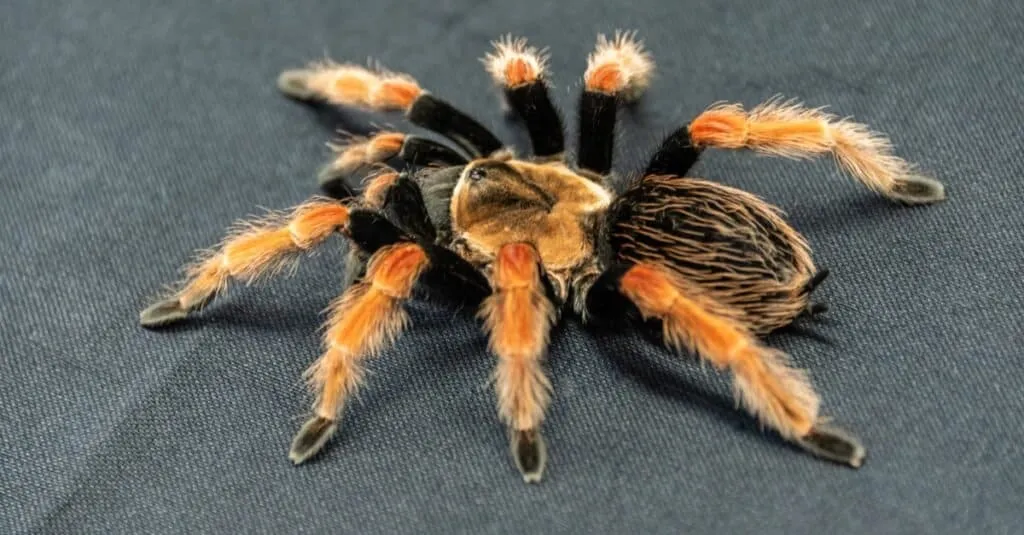
Several factors play a critical role in ensuring a successful molt for your Red Knee Tarantula. Maintaining the correct humidity levels is essential. The enclosure should be humid enough to prevent the old exoskeleton from drying out and becoming too difficult to shed. The temperature is another important consideration. The enclosure should be kept at a stable and appropriate temperature for the species. It’s also essential to avoid disturbing the tarantula during the molting process. Refrain from handling the tarantula or making sudden movements near the enclosure. Avoid offering food immediately after a molt, as the tarantula’s fangs and chelicerae are still soft and vulnerable. Providing a shallow dish of water can help with hydration, but avoid over-misting the enclosure, as this could increase the risk of fungal infections.
Top 5 Shedding Facts for Red Knee Tarantulas
Fact 1 Growth Stage
Shedding frequency is closely linked to the growth stage of a Red Knee Tarantula. Spiderlings and juvenile tarantulas shed much more frequently than adults. Young tarantulas may shed every few weeks or months as they rapidly grow. As the tarantula matures, the shedding intervals increase. Adult tarantulas typically shed once or twice a year. The growth rate slows as the tarantula reaches adulthood, and the frequency of molting decreases accordingly. It is a natural progression and a clear indicator of the tarantula’s life cycle and development.
Fact 2 Increasing Size
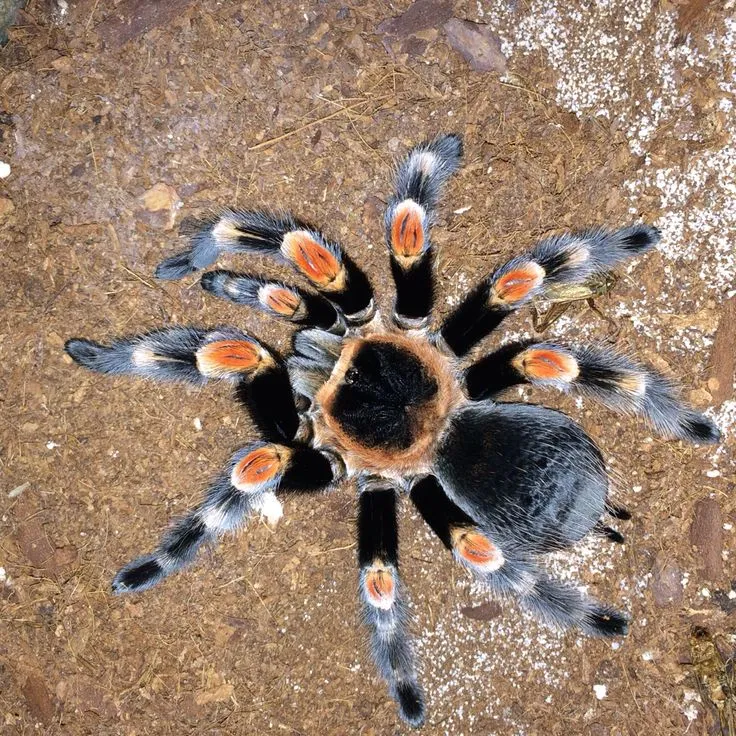
Each time a Red Knee Tarantula sheds, it increases in size. The new exoskeleton underneath is slightly larger than the previous one. This allows the tarantula to grow and develop. After a successful molt, you will notice the tarantula’s body size expanding. It’s a clear sign of healthy growth and a necessary part of the tarantula’s life. This growth is incremental with each molt, contributing to the tarantula’s overall size and maturity over time.
Fact 3 Duration of Shedding
The duration of the shedding process can vary. It depends on the tarantula’s age, health, and environmental conditions. A typical molt can last from a few hours to a full day. Smaller, younger tarantulas may shed faster than older, larger ones. Environmental factors, such as humidity and temperature, also play a role. Maintaining the right conditions is essential for a smooth and efficient molt. As an owner, it’s important to be patient and avoid disturbing the tarantula during this period.
Fact 4 Environmental Factors
Environmental factors have a significant impact on a Red Knee Tarantula’s shedding process. Humidity is particularly crucial. Low humidity can cause the old exoskeleton to dry out and become difficult to shed, leading to a failed molt. Adequate humidity promotes a successful molt. Temperature is also important, with a stable, species-appropriate range being ideal. Providing a secure, stress-free environment is also essential. Avoid sudden changes in temperature or humidity, and minimize disturbances during the shedding period. Proper environmental conditions can significantly improve the tarantula’s molting experience and overall health.
Fact 5 Post-Shedding Care
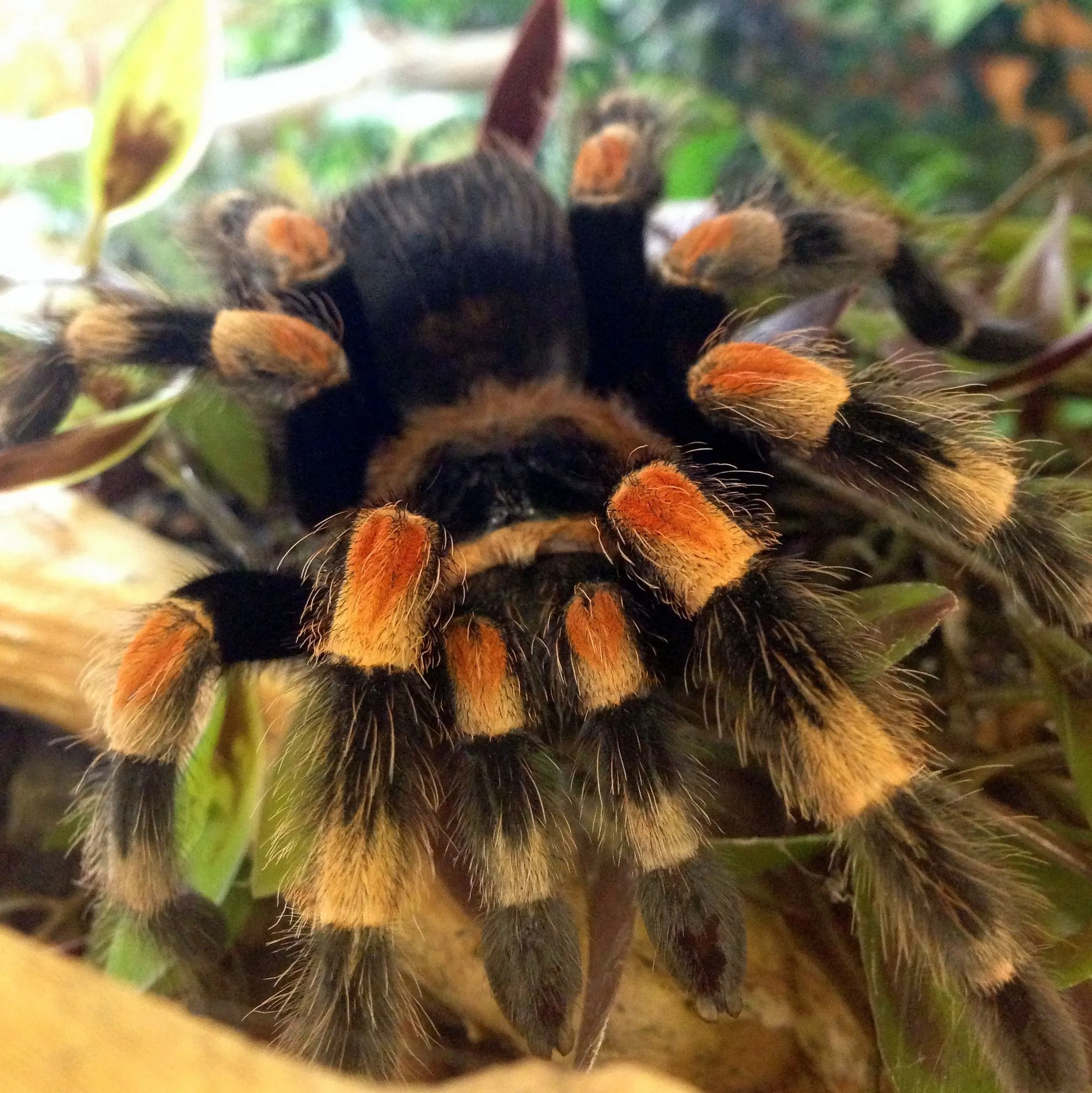
After a Red Knee Tarantula sheds, it is in a vulnerable state. The new exoskeleton takes time to harden fully. Do not offer food immediately after a molt. The tarantula’s fangs and chelicerae are still soft and can be damaged. Wait a few days to a week before offering food. Provide a shallow dish of fresh water, but avoid over-misting. Maintain the proper temperature and humidity levels in the enclosure. The tarantula will be more active and its appetite will return. Observe the tarantula closely in the days following the molt to ensure that it is eating and behaving normally.
What to Do If Your Tarantula Fails to Shed
Providing Assistance
In some cases, a Red Knee Tarantula may struggle to shed its exoskeleton. A failed molt can be a serious issue, as the tarantula can become trapped in its old shell. If you notice your tarantula is having difficulty shedding, it is important to seek professional help. You can gently assist the tarantula by moistening the old exoskeleton with lukewarm water. However, avoid pulling or tugging at the old shell, as this can injure the tarantula. If the tarantula is stuck, consult with a veterinarian or an experienced tarantula keeper for guidance. They can assess the situation and provide the best course of action.
Prevention
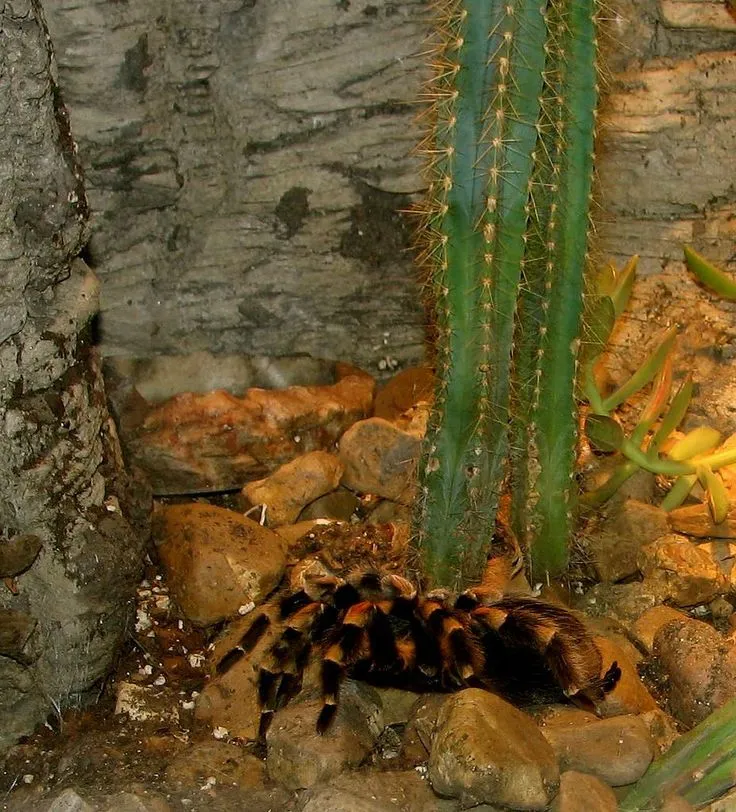
Preventing shedding problems starts with proper care. Maintaining the correct humidity and temperature levels is crucial. A dry environment makes the old exoskeleton more difficult to shed. Provide a varied diet and avoid overfeeding, as obesity can sometimes interfere with molting. The enclosure should also be free from any hazards, such as sharp objects, that could injure the tarantula during the molting process. Keep the enclosure clean and provide a secure environment. Regular monitoring and good husbandry practices can significantly reduce the risk of shedding issues and contribute to the long-term health and well-being of your Red Knee Tarantula.
